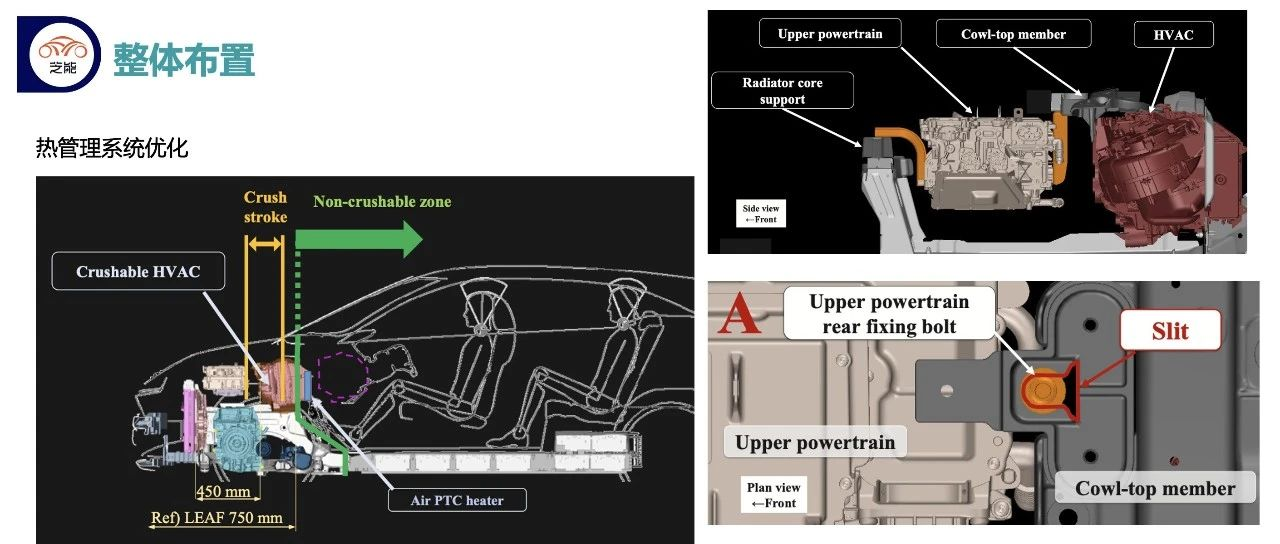Author: Tao Yanyan
This column was originally written for automotive engineers. In order to continue our technical style, in 2023, we will continue to collect information on technical papers and workshops to do some translation and technical commentary work.
I have stored the reference document “High-capacity lithium-ion battery for ARIYA” in the Knowledge Planet and also organized it into an article. I invite the principal to comment.
Technical reference document: “NISSAN TECHNICAL REVIEW”
Download link (or click on the original text to read): https://t.zsxq.com/0aRVlt1i4
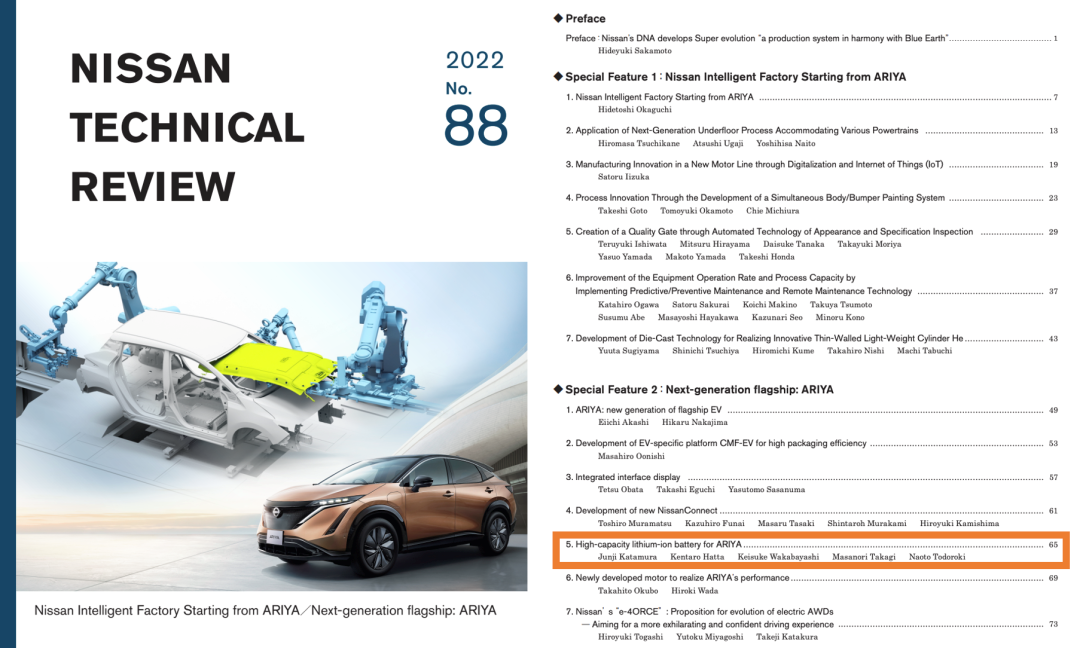
From the hardware configuration of this car, it can be considered that the Japanese engineers are very sincere — including 78 ECUs, 9500 CAN information definitions. Nissan + Renault has actually tried their best to provide enough intelligent design for this car. However, Chinese consumers either don’t feel the same or don’t approve of it.
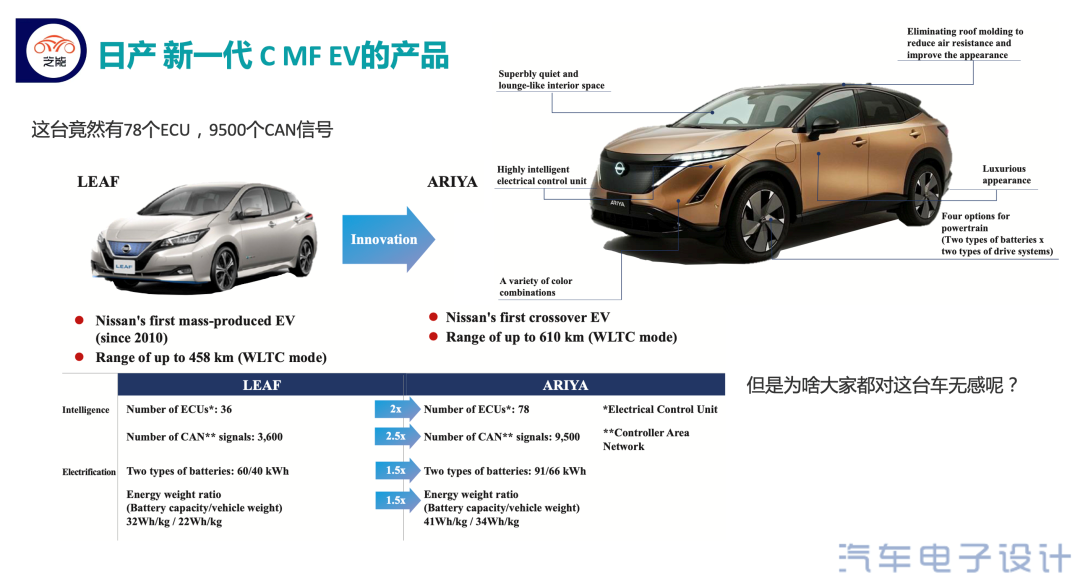
Battery system design
For platform considerations, ARIYA’s battery system is designed with two different capacities:
● Standard Range 66kWh (available 63kWh), 12 modules
● Long Range 91kWh (available 87kWh), 14 modules
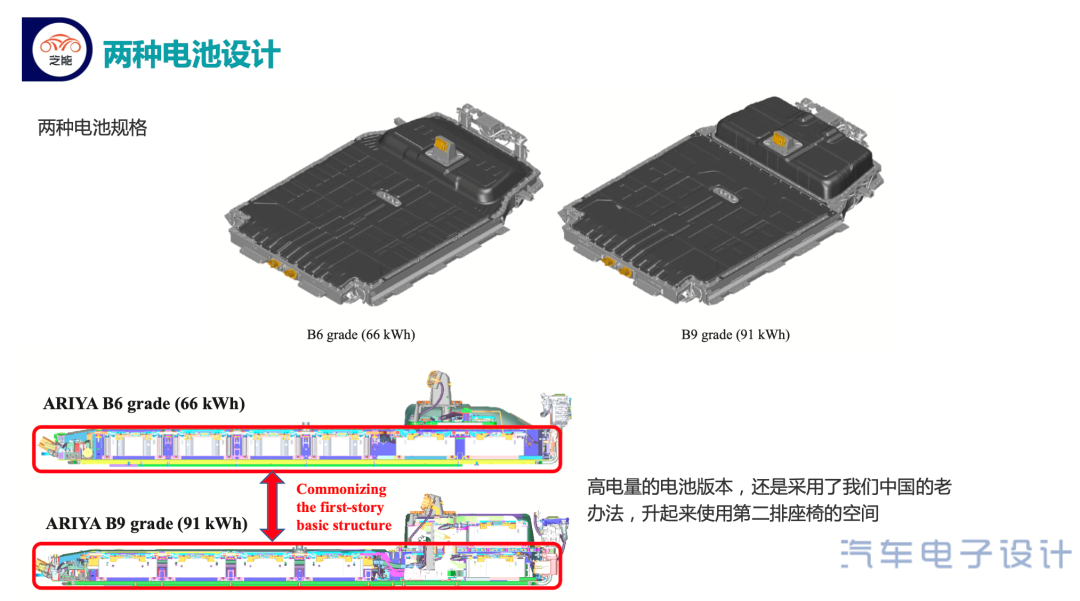 In terms of the design features of the battery system, the first is the use of liquid cooling. The main innovation is the integration of the liquid cooling plate and the bottom guard plate into one, which is the optimized solution that ensures leakage under worst-case scenarios. Liquid cooling combined with liquid heating is currently the mainstream solution, but Japanese engineers are more concerned about the reliability of leakage. With this improvement, the maximum fast charging power supported by ARIYA can reach about 130 kW (LEAF is in the range of 50 kW).
In terms of the design features of the battery system, the first is the use of liquid cooling. The main innovation is the integration of the liquid cooling plate and the bottom guard plate into one, which is the optimized solution that ensures leakage under worst-case scenarios. Liquid cooling combined with liquid heating is currently the mainstream solution, but Japanese engineers are more concerned about the reliability of leakage. With this improvement, the maximum fast charging power supported by ARIYA can reach about 130 kW (LEAF is in the range of 50 kW).
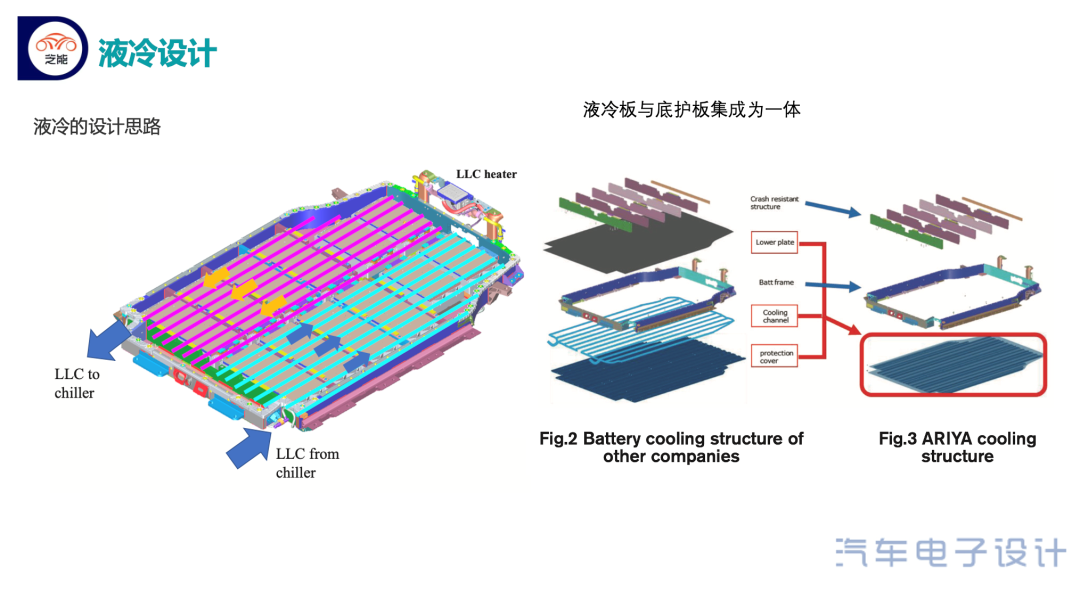
The original text referred to in the following figure is written in great detail (Figure 5): on the one hand, the edge of the entire battery pack is left with cooling interface pipelines; on the other hand, the layout of the entire pack is still relatively traditional.
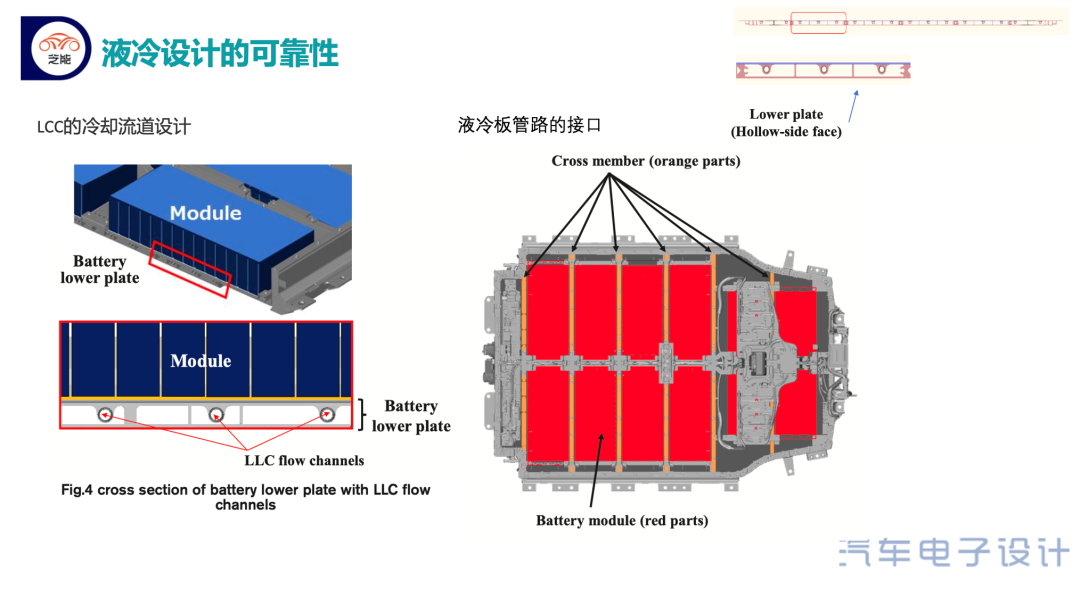
Comment: This battery system design is likely to be based on the Bolt, so many of the designs still seem limited and trapped in traditional approaches. However, it may not be realistic for Japanese designers to iterate quickly.
Considerations for Synergistic Design of Battery System and Vehicle
ARIYA is manufactured based on Nissan’s new generation electric vehicle platform CMF-EV. In terms of overall space utilization, on the one hand, the wheelbase is used to provide the largest possible space for the passenger compartment; on the other hand, design is used to level the foot space in terms of ergonomics. However, it is not clear why Japanese engineers still want to make a front-wheel drive car instead of considering the driving pleasure.
In terms of the overall layout, Nissan engineers have also targeted thermal management. Mainly focused on front-wheel drive cars, of course, we can see that this car is still relatively traditional and has not switched from distributed thermal management to a centralized system.
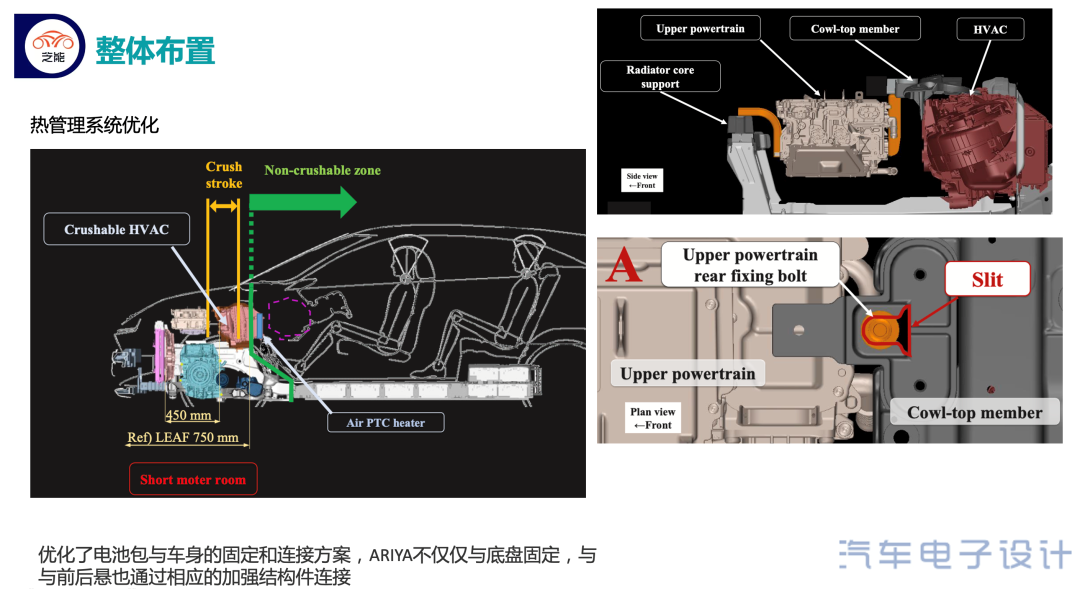
CMF-EV optimized the vehicle’s HVAC system and used the collapsibility assisted forward collision of the HVAC. Secondly, the smoothness of the design of the vehicle floor was achieved by the integration of the battery pack and the vehicle’s functions.
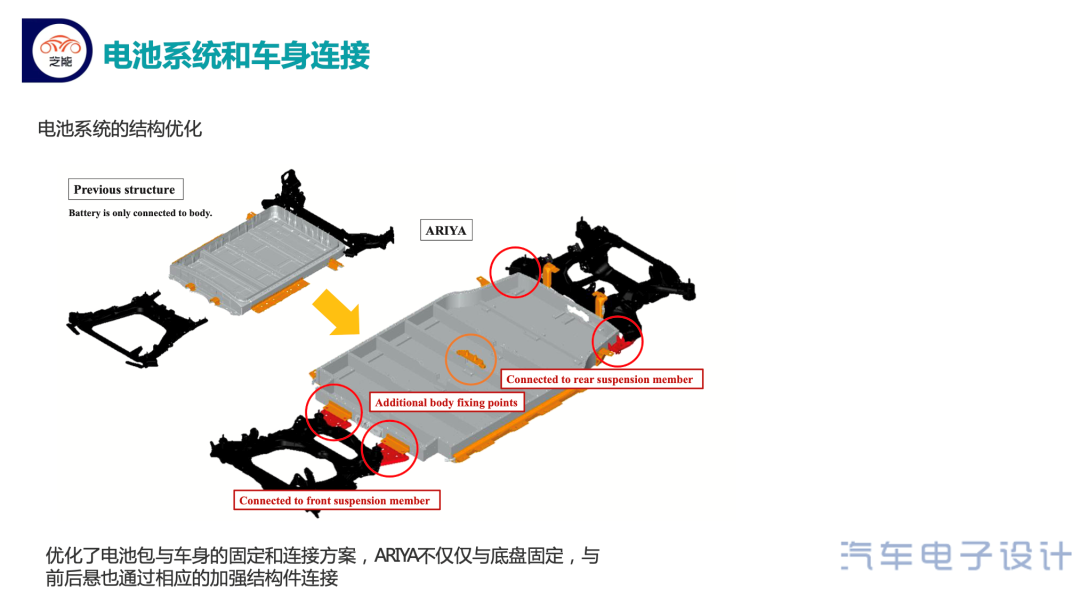
In addition, the cooling circuit of the battery system and the liquid cooling circuit of the motor are arranged through the lower box body and the side frame structure of the box body, which is actually reflected in the design of the battery.

Commentary: I believe there is a cognitive problem here: if the benchmark model has always been compared to LEAF and Bolt, it is not realistic to expect Japanese technicians to have new ideas and implement them boldly.
Conclusion: This is our first truly technical article of the new year, and we will continue to maintain the tradition of discussing technology in the future.
This article is a translation by ChatGPT of a Chinese report from 42HOW. If you have any questions about it, please email bd@42how.com.
